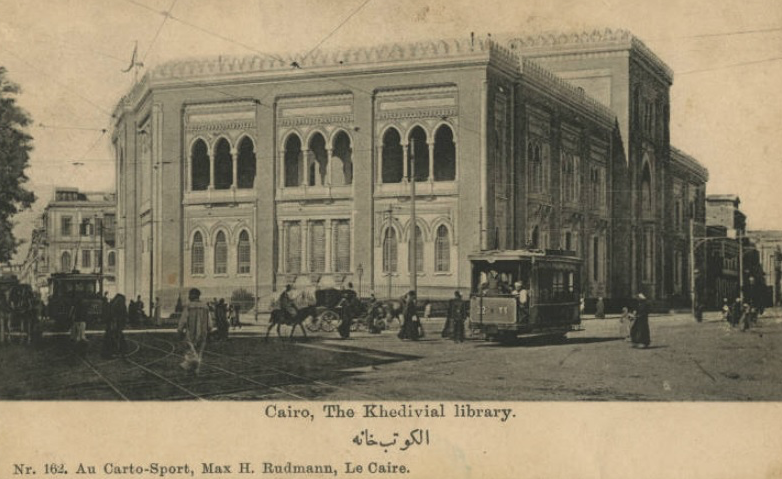CAIRO – 29 July 2020: The Egyptian National Library & Archives is the first national library in the Arab world.
In 1870 AD, and based on a proposal by Ali Pasha Mubarak, head of the Knowledge Bureau at the time, Khedive Ismail issued an order to establish a book house in Cairo, “The Books of the Egyptian Khedive”, to collect precious manuscripts and books that had been collected by sultans, princes, and scholars from mosques, shrines, and schools, to be preserved at a public library like the national libraries in Europe.
The library was established in the ground floor of the palace of Prince Mustafa Fadel, Khedive Ismail's brother, in Darb al-Gamamez.
On July 29, 1870 AD, the first Egyptian National Library & Archives Act and its bylaw were established, and to turn a new page of Egypt's intellectual history.

This law is the first to regulate the work of the National Library. Some provisions of the law stipulated the intense observation of visitors to the library, to avoid losing any of the library's precious possessions.
The law also stipulated the conditions for benefitting from the library services and ways to preserve the library, explaining the progress of the library’s services, ways to preserve and protect the library's holdings, and facilitate visits. A council was appointed to regulate the library’s activities.
According to the official website of the Egyptian National Library and Archives, in 1904 AD the library moved to a building that was established in Bab Al-Khalq Square.
In 1971, the library moved to its current building on the Nile Corniche in Ramlet Bulaq, which was designed to be suitable for modern librarian services and to provide huge spaces to suitably store manuscripts, papyri, publications, periodicals and microfilms.
That is in addition to halls that accommodate the huge number of visitors to the library and places for specialized centers and administrative offices for the national library to provide services to researchers and readers in various fields.
This building is divided into four units:
First Unit: A main unit consisting of seven floors. Its facade overlooks the Nile Corniche and is dedicated to administrative halls and offices.
Second Unit: A unit known as the Tower Building designed to consist of 22 floors. However, only eight floors of the books storehouses were completed.
Third Unit: A back unit connected to the Tower Building designed to contain the scientific centers for heritage, history of Egypt, restoration, bibliography, computer, and human development, in addition to the central administration for financial and administrative affairs' various departments. The ground floor and basement contain the Egyptian National Library and Archives’ printing house and its artistic departments.
Fourth Unit: A unit adjacent to the main building. It consists of three floors and was allocated to the library in 1989. It encompasses the office of the Chairman of the Authority’s Board of Directors, and some departments affiliated to it.
In 1966 AD, the Egyptian Archives joined the Egyptian Books House, and in 1993 the Republican Decree was issued to establish the Egyptian National Library & Archives. It had an independent organizational structure, and it was divided into several main central departments.
The library also contains a good set of official documents that are represented in the endowment arguments, documents of the various ministries, court records and others, a great treasure for researchers in various archaeological and historical paths.
The library also has a good collection of Arab money, the oldest of which dates back to the year 77 AH (696 AD).
Its collections include a large assortment of Qur'an manuscripts written on paper and leather, some of which are in ancient, unbroken kufic script, and others are written by famous calligraphers.
Additionally, the library houses a group of papyrus manuscripts from various parts of Egypt, some dating back to the seventh century or before. It is a mine of information about the social and civil life in Egypt at the dawn of Islam.
The library houses numerous Ottoman and Persian documents as well, in addition to ancient coins, the oldest of which dates back to 693 AD.
Comments
Leave a Comment